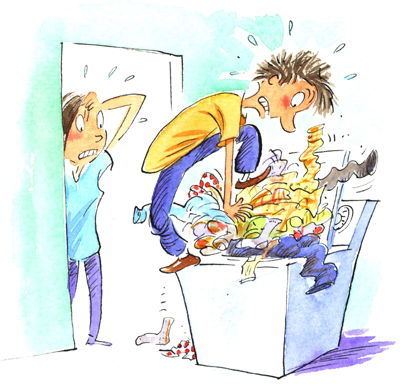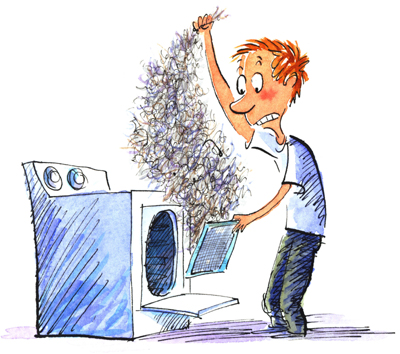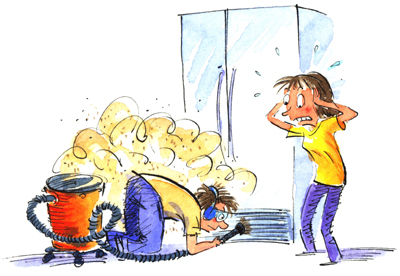No. 5
Make appliances last
Bad habits cost you—good habits save thousands
Appliance repair technicians and salespeople often say the same thing: “If people treated their appliances right, I’d have to find a new line of work.” So if you want to keep them employed (at your expense) ignore these pages. Otherwise, read on and save big.

Don’t overload your washer or dryer
You may think you're saving time, water or energy by cramming more clothes into your washer and dryer. But overloading any washer or dryer causes damage to motors, belts and other moving parts. Some of the repairs are so expensive that you’re better off buying a new machine.
Don’t block air vents
Freezers and refrigerators require proper airflow inside the compartments to keep foods at the right temperature. Blocking the vents (often at the back of the compartment) can cause cooling problems and force the compressor and fans to run overtime. At best, that wastes energy. At worst, you’ll have to replace the appliance. So think twice before you jam warehouse-size packs of frozen food into the freezer.

Clean fridge gaskets
If you keep your refrigerator door gaskets clean, they'll seal properly and last the life of the fridge or freezer. But if you let sticky foods like syrup and jam build up on the door gasket, they’ll glue the gasket to the frame. Pulling harder on a stuck door eventually tears the gasket, and that'll cost you $100 or more. Plus, if the door doesn’t seal properly, the fridge has to run longer, and that'll boost your electric bill. Clean the door gasket with warm water and a sponge. Don't use detergents; they can damage the gasket.
Don’t drag clothes out of the washer
Dragging a heavy bundle of clothes in or out of a front-loading washing machine may save your back, but zippers and buttons gradually tear up the door gasket. It’s just a piece of rubber, but it costs $100 or more. So lift out the wet clothes.

Don’t slam appliance doors
If you continually drop or slam the lid to your washer or dryer (top or front load), you’re going to break the lid/door switch. That'll cost you at least $100. Avoid this repair by lowering the lid and gently closing the door.

Clean the lint filter
A clogged lint filter means clothes dry slower while the machine works harder and wastes energy. If it gets bad enough, this will lead to repairs or even complete replacement of the dryer. Avoid all of this simply by cleaning the lint filter after each load.
Don’t spray switches
Most people clean knobs and touch-control panels with spray cleaners. But those liquids can easily work their way into the sensitive parts behind the controls and short them out. So instead, spray just a little liquid cleaner onto a rag or sponge and wipe controls clean.

Clean the refrigerator coils
Dust buildup on the coils underneath or on the back of your fridge reduces airflow and wastes energy. Worse, it leads to repairs that may cost more than a new fridge. That’s quite an incentive to vacuum the coils every six months.
Clean your dishwasher screen
If your dishwasher has a filtering screen under the bottom spray arm, clean it regularly. If you don’t, the stuck food particles degrade into slime that blocks water flow and reduces cleaning performance.




